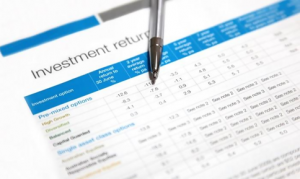How you can Consolidate your super
Australian Taxation Office (ATO) has shown that more than 14 million people have a super fund account, out of which 45% have multiple super funds, yet they are unaware that they hold them. In a detailed analysis, one in ten hold three super accounts while those with four or more super accounts are roughly 8%.
Here are the basic steps you need to follow to properly consolidate your super fund.
Step 1 choosing a super fund
It is important to choose a super fund that meets your needs. Likewise, the investment that you choose within your super will cater to the needs and risk profile.
Analyse carefully and choose the right kind of super that will safeguard you during your retirement. In case you fail to choose the right super, your retirement needs may not be met effectively.

Step 2: track down your other super funds
There exists a strong chance that people who have numerous jobs have multiple super funds. There is even a higher chance that most of them have not consolidated their super funds. Gather all the superannuation funds, and in case you have one that is lost, ensure to find it.
Step 3: analyse the insurance
Check whether the super funds you intend to close have any insurance attached to them. The common type of insurance that superannuation funds usually offer include income protection insurance and life insurance, total and permanent disability insurance. Examining the insurance attached will enable you to replace the covers elsewhere before you close the account effectively.
Step 4: request for your super fund to arrange for the transfer
Many of the super funds around will provide a superannuation rollover form or a simple transfer form for you to complete. Later on, the funds will do for you the subsequent legwork.
Step 5: make online registration of your fund
According to ASFA research, those who monitor super balance through a hardcopy statement are only 46%; the other 64% prefer to use either an email statement (20.1%) or online account portal (44.4%) to monitor their fund.
Examining your fund balance and performance electronically is a fantastic way to keep your savings on track, and fortunately many superannuation funds offer such online capabilities.

Completing an online transfer
The quickest and easiest way to move all the super available into a single account is through completing an online transfer. In order to do that, just follow the following procedures:
- Login to myGov account, and find the ATO section, then, click it. In case you don’t have myGov account, you can create it and later link the ATO to that account.
- Head to the ‘Super’ tab. In that section, you can either:
- Examine the details of all your super accounts, including those you might not be aware of.
- Examine details of all your super, including the ones that the ATO is holding on your behalf.
3.From the funds listed, select the ‘transferring fund’ (the fund you desire to transfer your money from) and the ‘receiving fund’ (the fund you desire to transfer your money to).
4. Make a confirmation of your selection, and then the funds will move your accounts into a single account within three days.

Contact your fund
For efficiency purposes, either contact the current fund, then, inform them that you need to consolidate your accounts or contact the fund you want to transfer money into.
Most of the funds around are able to consolidate accounts on your behalf, so you just examine the details that are stated on your fund’s website.
Why is it crucial to rollover your super?
For any super to manage your superannuation investment, it will have to charge you some fees. The fees can be quite small Industry Superfunds charges them but you may to pay fees on every account when the super runs more than one fund. If not checked, multiple fees usually have the tendency to add up and eat into part of your retirement income.
That’s why it is crucial for an individual to consolidate all your super into one account where one set of fees is payable. In addition, the arrangement also provides less paperwork to deal with.
Rollover and insurance
Check whether there exist an insurance type and amount you need to be offering in the fund you have chosen to roll into. If you consider insurance an important element of your super fund, first examine to ensure that Death and Disability insurance and Income Protection cover is provided.
Remember that any insurance coverage that you had in your old fund will cease the moment you consolidate your super from one account to another. For further clarification, it is wise to contact your fund provider.

Things to check before taking an action
Before you consolidate or move funds, the following are some of the things you should consider:
- Exit and withdrawal fees: before you close any current super funds, examine the exit and withdrawal fees. Even if it does not prevent you from consolidation, you ought to know the expenses you are bound to incur.
- Insurance: Check carefully examine the insurance on all super funds around. Most supers usually have a death and disability insurance, and income protection cover. Consider if you are comfortable keeping the super because of the insurance or you can just obtain a cover from elsewhere. Consider your needs and know whether it is appropriate to apply for another cover.
- Employer contributions: In case you are employed, remember to inform your employer about your super choice and see whether they can make contributions to your preferred fund.
- Fund performance: Making a quick judgment concerning fund performance is not easy. Therefore, choosing a super that has the highest balance is not always suitable.
- Fees structure: Super funds usually entail considerable annual fees. You will not necessarily get a better fund performance when high fees are charged and as well it is not easy as choosing the super that has the lowest fees.
- Added benefits: Consider other benefits you are bound to lose. Check if there is access to discounted health or banking insurances. Hence, before settling on a decision, think if these are worth keeping.
The above article is information only and mot advice.

